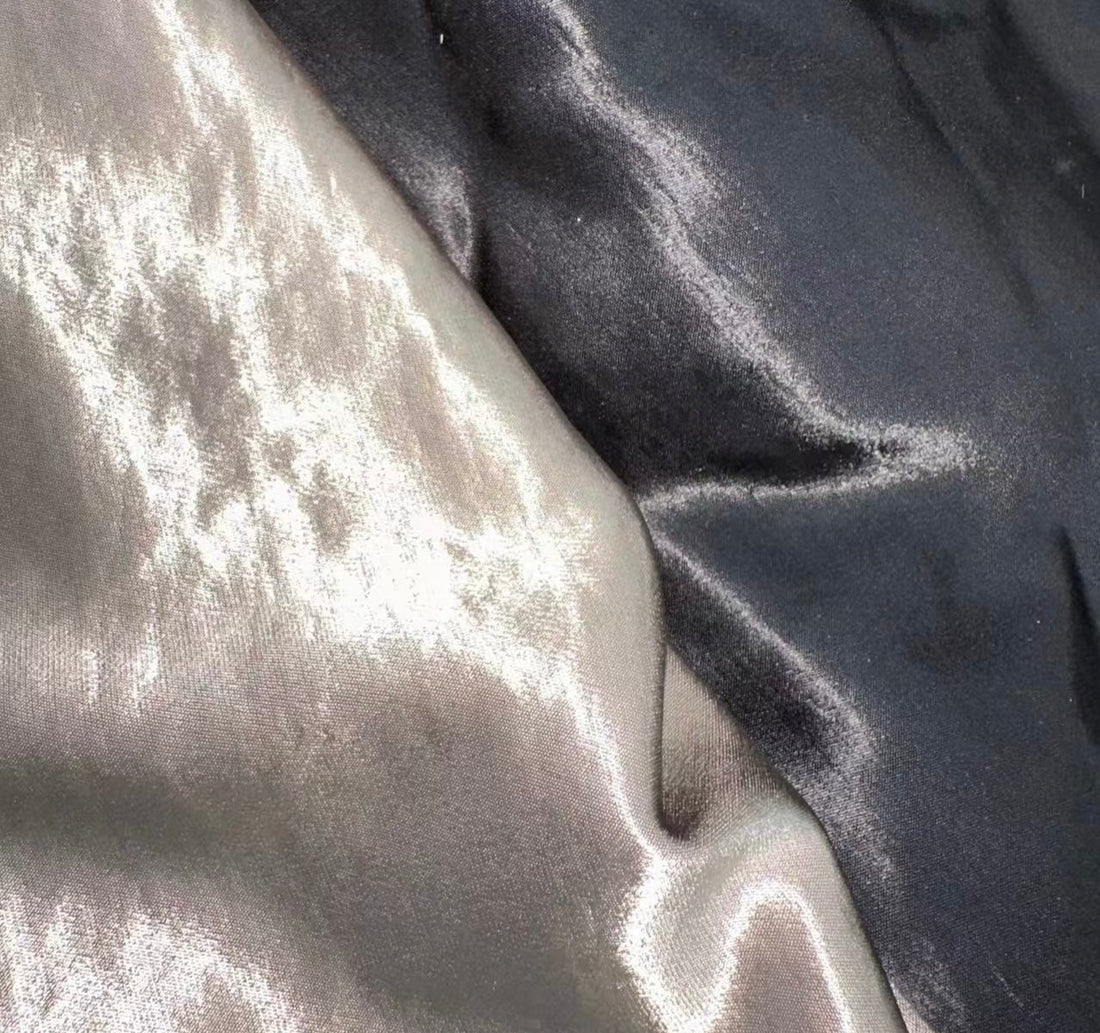
Satin Fabric: What It Is, Types, Care Tips, and Modern Uses
What Is Satin Fabric?
Satin fabric is known for its smooth, glossy surface and luxurious drape. But contrary to common belief, satin is not a material — it’s a weave pattern.
The satin weave structure allows yarns to float over several others before passing underneath one, creating a high-shine face and a dull back. This construction gives satin its signature luster and fluidity.
What Is Satin Fabric Made Of?
Satin can be woven from several fibers:
- Silk satin – the most luxurious, soft, and breathable option;
- Polyester satin – affordable and wrinkle-resistant;
- Nylon satin – strong, shiny, and slightly stretchy;
- Acetate satin – glossy but delicate.
Because the term describes the weave, not the fiber, satin can range from natural to synthetic.
👉 Related reading: Woven Fabric Guide
Is Satin a Natural Fabric?
Not always. Silk satin is made from natural silk fiber, while most modern satins use synthetic fibers like polyester for durability and cost efficiency.
So when people ask, “Is satin a natural fabric?” — the answer depends on its fiber source.
If you’re seeking breathability and eco-friendliness, silk satin is the better choice; if you want practicality and easy care, polyester satin wins.
Characteristics and Feel
Satin fabric is prized for several key qualities:
- Soft and smooth texture that feels cool on the skin;
- Elegant sheen that reflects light beautifully;
- Excellent drape, ideal for dresses, gowns, and linings;
- Less absorbent, helping maintain color vibrancy;
- Prone to snags, so careful handling is required.
Different Types of Satin
There are many variations depending on thickness, yarn, and finish:
- Charmeuse Satin – lightweight with high shine; perfect for lingerie or blouses.
- Duchess Satin – heavy and structured; used for bridal and evening wear.
- Crepe-back Satin – matte on one side, shiny on the other; versatile for tailored garments.
- Stretch Satin – includes spandex, giving body-hugging flexibility.
Each type has a different luster and drape, so selecting the right satin fabric depends on your purpose and desired effect.
How to Wash Satin Fabric
Because of its delicate surface, satin requires gentle care.
Hand-Washing
- Fill a basin with cold or lukewarm water.
- Add mild detergent formulated for delicate fabrics.
- Swish gently — avoid wringing or twisting.
- Rinse with clean water and air dry flat.
Machine-Washing
If the label allows it:
- Use a gentle cycle, cold water, and a mesh laundry bag.
- Avoid spin-drying.
- Never bleach satin fabrics.
How to Iron Satin Fabric
Satin can scorch easily, so ironing must be done carefully.
- Turn the fabric inside-out and use low heat or silk setting.
- Place a thin cotton cloth between the iron and satin.
- Steam lightly or use a garment steamer to restore drape.
If you wonder “Can you iron satin fabric?” — yes, but only with protection and low temperature.
Can You Dye and Sew Satin Fabric?
Satin may look delicate, but it’s surprisingly versatile — you can even dye and sew it beautifully with the right technique.
When it comes to color, silk and nylon satins absorb dye easily, creating deep, luminous tones, while polyester satin is more resistant and requires special disperse dyes or heat-transfer methods. If you’re experimenting with a DIY project, always start small — a single swatch can save the whole garment.
Working with satin in the sewing room takes the same care and patience. Its silky, fluid texture tends to slip, so precision matters more than speed. Use fine, sharp needles (size 9 or 11) and smooth polyester thread to avoid snags. Keep pins within seam allowances or use clips instead of needles to prevent visible holes. Finally, press seams through a pressing cloth to maintain that signature sheen without shine marks.
Satin rewards precision — a careful hand will transform its slippery surface into a garment that moves like light itself.
Common Applications of Satin Fabric
It’s no surprise that satin’s lustrous finish has made it a favorite across both fashion and art. From bridal gowns and evening dresses to ribbons, ties, shoes, and handbags, satin adds a subtle glow wherever it’s used. In home décor, it turns cushions, drapes, and bedding into elegant centerpieces that reflect light softly throughout a room.
Beyond fashion, satin has also found its way into contemporary art installations, where creators use its reflective texture and fluid movement to evoke emotion — a quality it shares with Tulle Fabric’s artistic use.
Soft, glossy, and ever-changing under light, satin continues to bridge the worlds of craftsmanship, fashion, and imagination — a timeless reminder that texture itself can tell a story.
Color & Design Trends
Satin continues to dominate fashion runways for its fluid shine and timeless elegance.
Recent trends favor muted neutrals, champagne tones, and jewel shades like emerald and deep indigo.
Explore more color inspiration in our Indigo Color Meaning and Trend.
Conclusion
Soft, glossy, and ever-changing under light, satin continues to bridge the worlds of craftsmanship, fashion, and imagination — a timeless reminder that texture itself can tell a story.
If you’d like to explore satin and other common materials up close, check out our Fabric Swatch Pack for Designers.
It includes 50 popular fabric types — satin among them — each with detailed notes and a downloadable PDF fabric guide, making it a perfect learning resource for designers and fabric enthusiasts.
FAQs About Satin Fabric
1. What is satin fabric made of?
It’s a weave, not a fiber — usually made of silk, polyester, or nylon.
2. Is satin a natural fabric?
Only silk satin is natural; most modern satin is synthetic.
3. How do you wash satin fabric?
Hand-wash gently in cold water with mild detergent, or use a delicate machine cycle.
4. Can you iron satin fabric?
Yes, but only on low heat with a pressing cloth to avoid shine marks or burns.
5. Can you dye satin fabric at home?
Yes — silk and nylon versions dye easily, while polyester satin requires special dye and heat.


